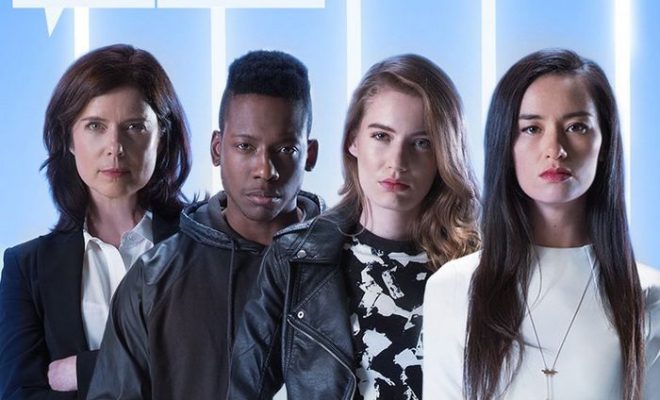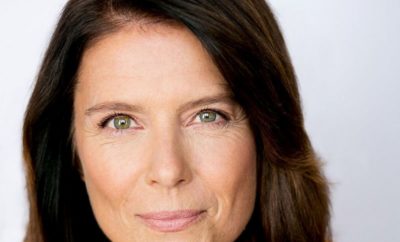
Features
Inhuman Condition: Changing the Medium
By: Kathryn Trammell
To look at a timeline of filmmaking from its conception to its present is to look at an industry catalyzed by a constant stream of advancements. Each advancement made within the industry is a bar raised, a challenge to those that came before it to do better, to meet or exceed that bar. Like sliders on a soundboard, advancements in filmmaking are set across different levels and by different films. Rippling bullets may have set the CGI bar high in 1999 when they rained down around Neo in The Matrix, but when rose petals instead rained down around Angela in American Beauty no one could question that the scene had forever change the way cinematography was approached across the filmmaking medium.
On a smaller film scale, the web series medium is making similar advancements, but one new series appears to have recently separated itself from the rest. It’s rare for a single film, TV show or web series to set multiple bars at the same time, but “Inhuman Condition” has done just that. In just eight episodes, it’s become obvious to fans and critics alike that KindaTV’s newest hit is very different from anything else the group has ever produced. You will not find a sweet Hufflepuff-meets-Slytherin love story told from the narrative perspective of a stationary audience-inclusive webcam when you watch “Inhuman Condition.” You will not find a plot steeped in witty camp or characters who are definitely bad or good when you watch “Inhuman Condition.” Instead, you will see something that has pushed the medium closer to the edge of the same beautiful darkness that made shows like “Battlestar Galactica” and “Lost” so iconic and groundbreaking.
Aesthetically speaking, “Inhuman Condition” is breathtaking. From set design and wardrobe to cinematography and editing, the program offers the kind of visual art that is rarely seen in a web series. Even from the opening sequence of shots in the series’ first episode it’s evident that this shift has happened. Every shot of Tamar, the first of Dr. Kessler’s (Torri Higginson) patients to whom we will be introduced, is full of careful meaning and purpose. Her room, her cell, is sterile and institutional with the only splash of anything colorful or organic coming from a TV on a white wall that’s playing a video of a forestscape. We know she’s scared to go outside, to experience the green of the screen on her wall, but we also know a part of her wants that experience, so without dialogue to interrupt the significance of the next moment, the music swells its steady synthetic pulse, and the camera follows Tamar (Cara Gee) outside where it circles her as she puts her face to the sun and the wind.
Thus, the stage is set not just for a new kind of story to be told, but for new way of telling it due largely in part to the camera’s newfound freedom. In KindaTV’s previous shows, the camera was limited to one wide shot fixed atop a computer desk that captured the small space inside either a dorm room or workspace. With “Inhuman Condition,” the camera is freed from that position. But what separates it from other web series that don’t use stationary, single-shot frames is the way the camera is used as an extension of characterization. We have seven minutes, maybe less, to be introduced to Dr. Kessler’s patients. We can gather small details about their personality based on the way they dress or the way they speak, the way they affect Dr. Kessler within the space they share with her, but our greatest insight into who they are can be derived from the way the camera depicts them. Despite all of his surface despair and grief, the camera makes sure to stay close to Linc’s (Thomas Olajide) face so that we can see it change the moment his true character is revealed. He is primarily filmed from his right side making the space between he and Dr. Kessler appear small and invasive, as if to indicate the space between them is volatile.
We know the exact opposite to be true whenever Clara (Clara Pasieka) is filmed. She is shot from her left side, an angle that by default includes Dr. Kessler in the not-so-distant background beside her. From this point of view, we not only see Dr. Kessler react to every word Clara says, we also see her watch Clara fidget and pick at her fingertips wondering like us if they’ve gone numb with necrosis. Letting us see this level of concern and care for Clara is not the kind of insight we are given when the camera focuses on other patients like Tamar, who is filmed head-on and with a rigid symmetry, or rather asymmetry, that matches the modern geometry of the room where she resides at The Center.
Most telling of all, it was the directing choice to film Dr. Kessler with an unsteady hand. Of all the characters to whom we are introduced in the series’ first few episodes, none should be in as much control of their lives and their surroundings as Dr. Kessler is, but when a character is filmed as if the ground beneath her is constantly moving and shaking we know this assumption to be untrue. Even in wide shots in which Dr. Kessler shares the screen with other characters, the camera seems less steady than it is when solely focusing on one of her patients. If I have read these directing choices correctly and we can assume the camera to be an extension of characterization, then we can also assume that the way each character is filmed to change over time depending on conflicts that arise and how each character responds to them. We can also assume that “Inhuman Condition” is doing something incredibly unique and extraordinary within the medium of web series production.
In it’s own way, the camera reveals to us what it means to be human. Although each of Dr. Kessler’s patients suffer from conditions that stigmatize them as monsters, we can’t help but connect with them on a very human, non-fictional level. In the past, monsters existed within genre fiction as a way of symbolizing the things we fear most. Zombies scare us because they represent a very real fear of contagion that cannot be controlled by any amount of government assurance and military might. Vampires intrigue us because they represent that chance for us to connect with the people we fear we might lose, the people for whom we would do anything if it meant being able to bring them back to the world in which we loved them. But in “Inhuman Condition,” these classic allegories get traded for a new set of metaphors that are more closely related to current global and political events.
Each of Kessler’s patients have a focal issue they struggle to deal with outside of their diagnosed conditions. It is my opinion that these issues reflect similar struggles felt by specific groups of people who undergo feelings of isolation and opposition. When watching Linc struggle to sort through his anger, it’s difficult not to associate him with groups of people who believe the only way their voices and rights will be recognized is through protesting and rioting against the governments that refuses to hear them.
Clara’s struggle is similar, but different. As the character in the story who has the least amount of control over the disease that is slowly killing her body, Clara has the most control over her mind and the choices she makes for herself, especially when it comes to choosing when she will die. Opposition to this decision on Dr. Kessler’s part highlights the struggle that any community living with terminal illnesses has when the stigma attached to their diseases are enough to draw out their poor quality of life, but not enough to let them decide when they get to end it.
Tamar, on the other hand, is fearful of letting go. Years of engrained learning at The Center has taught her to view her power as a shameful “anomaly” – something that needs to be restrained and tamped down. Because of this, Tamar shares an uncanny resemblance to groups of people who have been taught their entire lives that best way to stay afloat in life is never rock the boat, a belief that has ensured the oppression of people who are too busy being scared to start a revolution.
Sadly, although the world in which “Inhuman Condition” is set acknowledges the existence of monsters, our world still has trouble admitting to the metaphorical monsters that exist within our own societies. Aside from the groundbreaking cinematography and the storytelling application of new metaphors to old monsters, it is the series’ blatant commentary on the world around us that separates it from the rest. This show begs of its viewers the question, “If we admit that these monsters exist, can people ignore them any longer?” I know. It sounds redundant. But if we put the question into context, we see the bigger picture being represented by a series like “Inhuman Condition.” That is, if global societies were to finally admit that they have a discrimination problem (Linc), that they stigmatize groups of people who struggle with physical and mental diseases (Clara) and that unfair power balances dictate the majority of worldwide populations (Tamar), would anyone then be allowed to bury their head in the sand the next time catastrophe or revolution happens?
For the series at least, only time will tell.




You must be logged in to post a comment Login